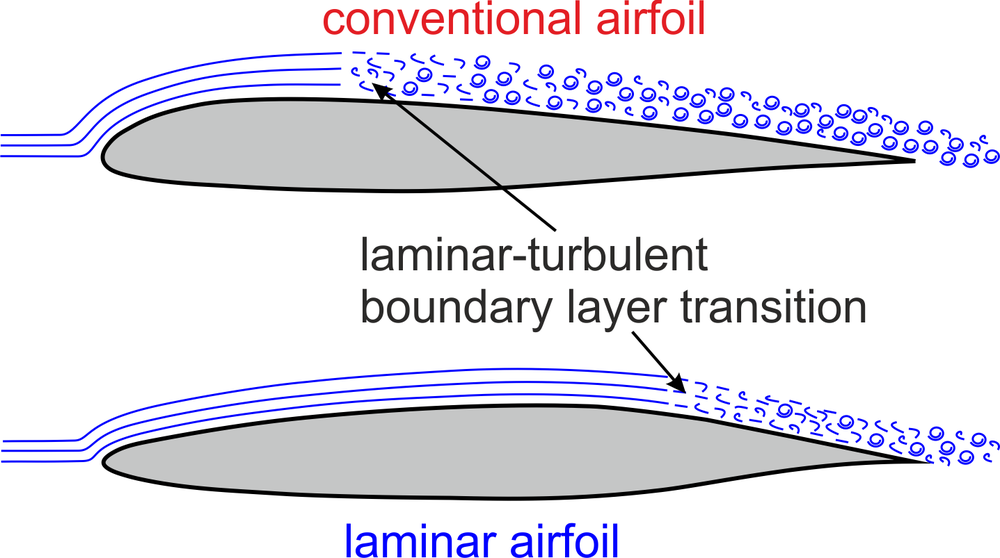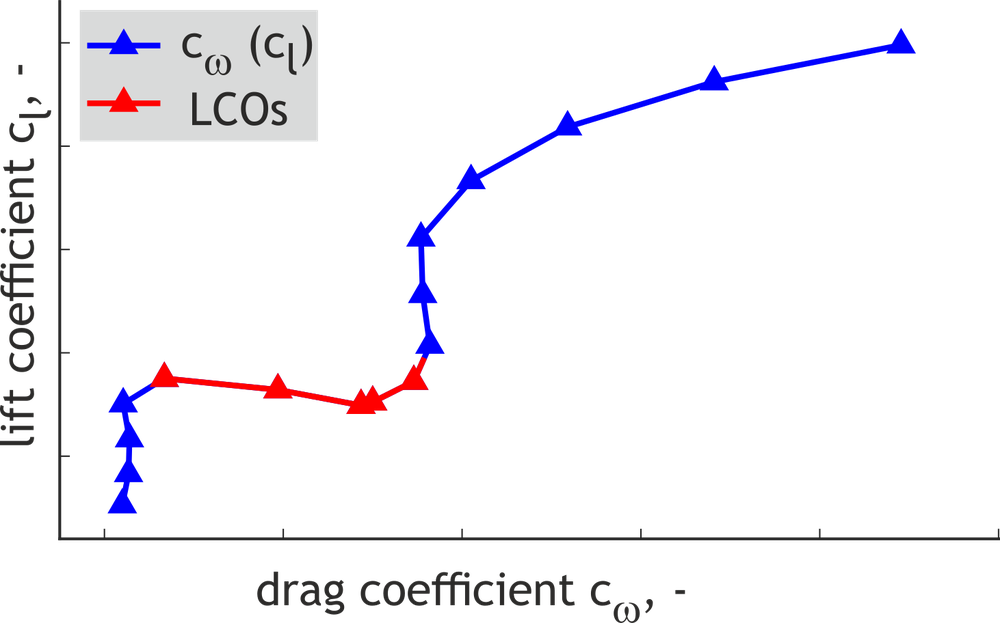Department Aeroelastic Experiments
The department Aeroelastic Experiments is committed to the planning, realization and analysis of challenging experiments in wind tunnels.

The aim is to make aviation in Europe climate-neutral by 2050. An important part of this is reducing the drag of future aircraft, with the wings playing a major role. The wings not only generate the necessary lift of an aircraft, they also contribute significantly to the overall drag and thus to fuel consumption. New wing shapes with so-called laminar airfoils can make flying more environmentally friendly. However, new types of aeroelastic instabilities have also been observed in wind tunnel tests, and their industrial relevance for modern commercial aircraft and thus laminar wing design urgently needs to be researched in more detail.
About half of the total drag of an aircraft is due to frictional effects. This frictional drag depends on the state of the boundary layer, a viscous transition layer on the surface of bodies flowing around it. This boundary layer flow can either be laminar or change to a turbulent boundary layer by a laminar-turbulent boundary layer transition.
Laminar airfoils exploit the significantly lower frictional resistance of a laminar boundary layer and shift the boundary layer transition as far downstream as possible by means of a special shape. The expansion of a turbulent boundary layer is thus minimized and a long laminar run length is achieved. Compared with a conventional airfoil, this results in lower frictional resistance.

In laminar airfoils, however, this drag reduction occurs only in a limited flight range, i.e. for certain flow velocities and angles of attack. If this range is left, laminar conservation fails and the laminar-turbulent boundary layer transition already starts significantly further upstream.
It is precisely in these transition regions (lift plateaus in the wing polar region) that the flow field around a laminar wing changes abruptly, which has a direct effect on the aerodynamic forces. In particular, the pitch moment is strongly influenced by the change in the boundary layer, which can lead to oscillations of the airfoil - the laminar wing starts to flutter.
The Institute of Aeroelasticity is a world leader in the field of laminar wing aeroelastics and has been pursuing a long-term strategy for several years to investigate the effects of laminar-turbulent boundary layer transition on the vibration behavior and aeroelastic stability of airfoils.
In the Transonic Wind Tunnel in Göttingen (TWG), the aerodynamics and flutter behavior of a laminar airfoil at flows close to the speed of sound were investigated within this framework. For this purpose, unique experimental setups are available, with the help of which, on the one hand, the laminar airfoil was set into a forced-excited motion in order to observe the behavior of the flow in response to this motion. On the other hand, the airfoil was suspended in a system of springs to study when and how the laminar wing begins to flutter. More than 100 sensors installed in the laminar wing, the test rigs and the wind tunnel continuously measure all important parameters such as flow velocity, pressure, aerodynamic forces and the state of the boundary layer.
In the process, the team of technicians and scientists succeeded in accurately measuring the motion of the boundary layer transition at near-sonic flow velocities even when the laminar wing flutters with large amplitudes and high frequencies. Thus, for the first time, two previously unknown phenomena could be observed and studied in more detail.

If the laminar wing is held stationary - i.e. the wing itself cannot oscillate - an oscillation of the aerodynamic forces occurs under certain flow conditions in the transition region of the laminar drag bucket. Such unsteady, i.e. time-varying, flow around airfoils is mainly caused by oscillations of compression shocks and is therefore also referred to as a shock buffet. In the case of the phenomenon observed here, however, only very isolated weak compression shocks occur, so that these were excluded as the cause. Rather, it was observed that the laminar-turbulent boundary layer transition begins to oscillate and periodically moves upstream and downstream on the upper surface of the laminar wing. This new phenomenon was therefore termed a boundary layer transition buffet. As a passenger, one would sometimes perceive this boundary layer transition instationarity as a strong vibration.

If the laminar wing is then elastically mounted with spring systems under the same flow conditions, the wing begins to flutter and performs so-called limit cycle oscillations (LCO), i.e. oscillations with a limited amplitude. This flutter behavior occurs only locally in the transition region of the laminar darg bucket and disappears as soon as the boundary layer transition is fixed at the leading edge of the laminar wing. Comparative flutter measurements with such a fixed transition confirm the independence of this boundary layer transition flutter.
The results obtained show that the laminar-turbulent boundary layer transition plays a much more important role in aeroelasticity than was previously assumed and that a complete aeroelastic system evaluation must also take boundary layer phenomena into account. Further experiments in larger wind tunnels, such as the European Transonic Wind Tunnel (ETW) in Cologne, are planned for the future. The experimental results obtained so far, as well as those obtained in the future, will be used to develop procedures and methods with which the dynamic behavior of the boundary layer transition can be correctly reproduced in numerical simulations. On the one hand, these methods can then be used for a valid assessment of the possible aeroelastic risks in the design of airfoils and aircraft with laminar profiles. On the other hand, procedures and knowledge are available to minimize any risks before the first flight through targeted optimization of the design of laminar wings and to ensure aeroelastic system safety for future aircraft and wings.
Marc Braune, DLR-Institute of Aeroelasticity, Department: Aeroelastic Experiments
